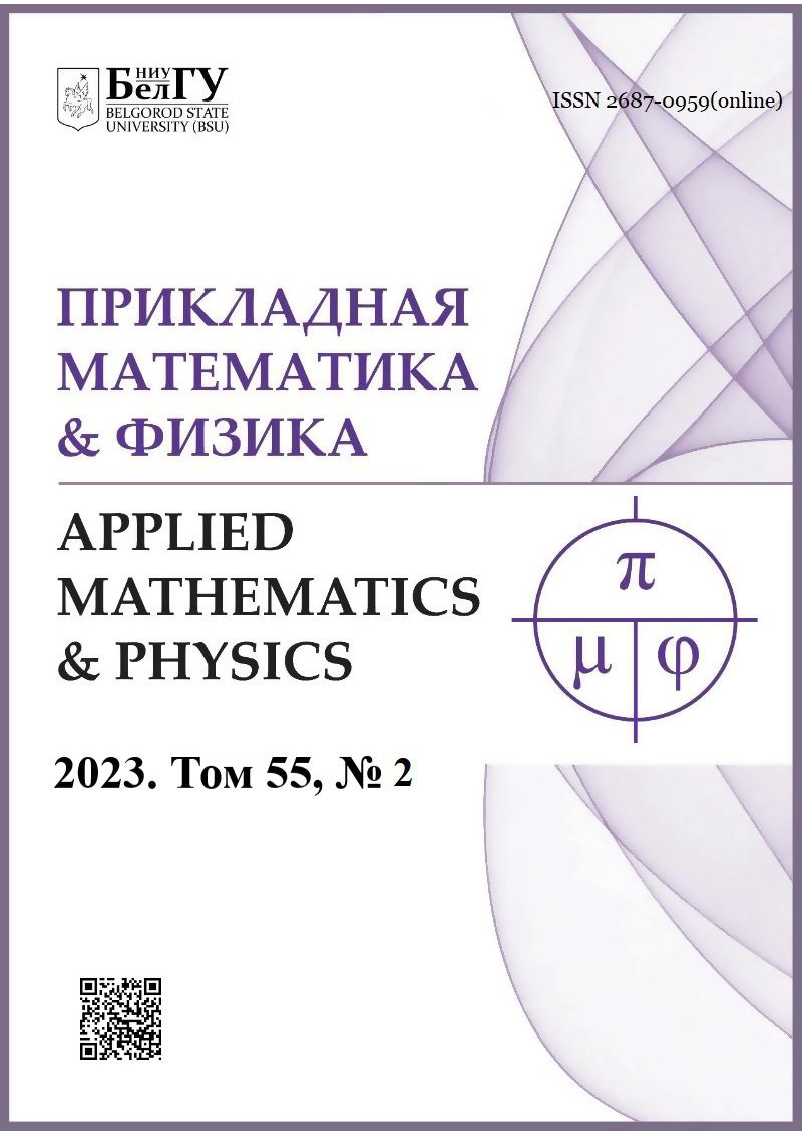Three-Electrode Liquid Crystal Cell With Lens-Like Properties
DOI:
https://doi.org/10.52575/2687-0959-2023-55-2-157-165Keywords:
Liquid Crystal Lens, Beam Steering, Charge MobilityAbstract
The paper describes a three-electrode liquid crystal cell with a floating electrode isolated from the liquid crystal layer. It has been experimentally shown that in constant electric fields, the reorientation of a nematic liquid crystal begins in the vicinity of the anode, while the boundary between the initial and reoriented regions of the liquid crystal remains unblurred in a wide voltage range. The region of the reoriented liquid crystal exhibits lens-like properties with cylindrical symmetry, and the location of this region depends linearly on the magnitude of the voltage. The maximum deviation of the laser beam fragments, which are the result of lens properties and interference, can vary in the range of at least a couple of tens of degrees from the original direction, demonstrating a linear dependence on the applied voltage. The influence of charge processes and cell prehistory on the behavior of the liquid crystal reorientation region is discussed.
Downloads
References
Бердниченко А. В., Кучеев С. И. 2020. Доменная переориентация нематика в поле p–n перехода в сенсоре пара органических реагентов. Прикладная математика & Физика, 52(3): 214–223.
Валетова Е. А., Колесников Д. А., Кучеев С. И. 2017. Адсорбция и переориентация нематика на наноразмерной углеродной плёнке, индуцированная парами органических растворителей. Научные ведомости БелГУ. Серия: Математика. Физика, 50(1): 64–72.
Вдовин Г. В., Гуральник И. Р., Котова С. П., Локтев М. Ю., Наумов А. Ф. 1999. Жидкокристаллические линзы с перестраиваемым фокусным расстоянием. Квантовая электроника, 26(3): 256–260.
Грязнова М. В., Данилов В. В., Кузнецов Ю. А., Рыльков В. В., Шахвердов П. А., Хребтов А. И. 2001. Жидкокристаллические микролинзы в системе оптического ограничения. Письма в ЖТФ, 27(2):24–29.
Жакин А. И. 2006. Приэлектродные и переходные процессы в жидких диэлектриках. Успехи физических наук, 176(3): 289–310.
Каманин А. А., Каманина Н. В. 2006. Структурирование жидкокристаллической мезофазы, вызванное введением эритроцитов. Письма в ЖТФ, 32(14):25–32.
Кучеев С. И. 2016. Переключение ориентации нематика, обусловленное диффузией фосфолипида в МДП структуре. Научные ведомости БелГу. Серия: Математика. Физика, 45(27(248)): 115–120.
Algorri J. F., Morawiak P., Bennis N., et al. 2020. Positive-negative tunable liquid crystal lenses based on a microstructured transmission line. Scientific reports, 10(1): 10153–10162.
Blinov L. M., Chigrinov V. G. 1993. Electrooptic Effects in Liquid Crystal Materials. New York. Springer, 464.
de Blas M. G., Geday M. A., Oton J. M., Arregui X. Q. 2021. Two-dimensional digital beam steering based on liquid crystal phase gratings. Applied Sciences, 11(8): 3632–3644.
Chang K., Varanytsia A., Chien L. 2017. Electrically tunable liquid crystal lens with suppressed axial chromatic aberration. Applied physics letters, 111(3): 033504–033509.
Chang Y., Jen T., Ting C., Huang Y. 2014. High-resistance liquid-crystal lens array for rotatable 2D/3D autostereoscopic display. Optics express, 22(3): 2714–2724.
Gunter P., Huignard J. 2007. Photorefractive Materials and Their Applications. New York. Springer, 626.
Fan Y., Ren H., Wu S. 2003. Switchable Fresnel lens using polymer-stabilized liquid crystals. Optics Express, 11(23): 3080–3086.
Feng W., Liu Z., Liu H., Ye M. 2023. Design of tunable liquid crystal lenses with a parabolic phase profile. Crystals, 13(1): 8–17.
Huang B., Huang S., Chuang C., Kuo C. 2020. Electrically-tunable blue phase liquid crystal microlens array based on a photoconductive film. Polymers, 12(1): 65–72.
Kaur S., Kim Y., Milton H., Mistry D., Syed I. M., Bailey J., Novoselov K. S., Jones J. C., Morgan P. B., Clamp J., Gleeson H. F. 2016. Graphene electrodes for adaptive liquid crystal contact lenses. Optics express, 24(8): 8782–8787.
Kovalchuk A. V. 2001. Relaxation processes and charge transport across liquid crystal–electrode interface. Journal of Physics: Condensed Matter, 13(46): 10333–10345.
Kucheev S. I. 2008. Transient current in nematic cells containing a silicon substrate. Journal of Physics: Condensed Matter, 20(27): 275222–275226.
Lin S., Huang L., Lin C., Kuo C. 2014. Polarization-independent and fast tunable microlens array based on blue phase liquid crystals. Optics express, 22(1): 925–930.
Munavar H. M., Doreswamy B. H., Shobha N. C., Vijayakumar V. N., Fakruddin K. 2019. Orientational order parameter of liquid crystalline nanocomposites by Newton’s rings and image analysis methods. Наносистемы: физика, химия, математика, 10(3): 243–254.
Naito H., Yoshida K., Okuda M., Sugimura A. 1994. Transient current study of ultraviolet-light-soaked states in n-pentyl-p-n-cyanobiphenyl. Japanese Journal of Applied Physics, 33(10): 5890–5891.
Ren H., Fox D. W., Wu B., Wu S. 2007. Liquid crystal lens with large focal length tunability and low operating voltage. Optics Express, 15(18): 11328–11335.
Subota S. L, Reshetnyak V. Yu., Ren H., Wu S. 2010. Tunable-focus liquid crystal lens with non-planar electrodes. Molecular Crystals and Liquid Crystals, 526(1): 93–100.
Abstract views: 207
##submission.share##
Published
How to Cite
Issue
Section
Copyright (c) 2023 Applied Mathematics & Physics

This work is licensed under a Creative Commons Attribution 4.0 International License.





